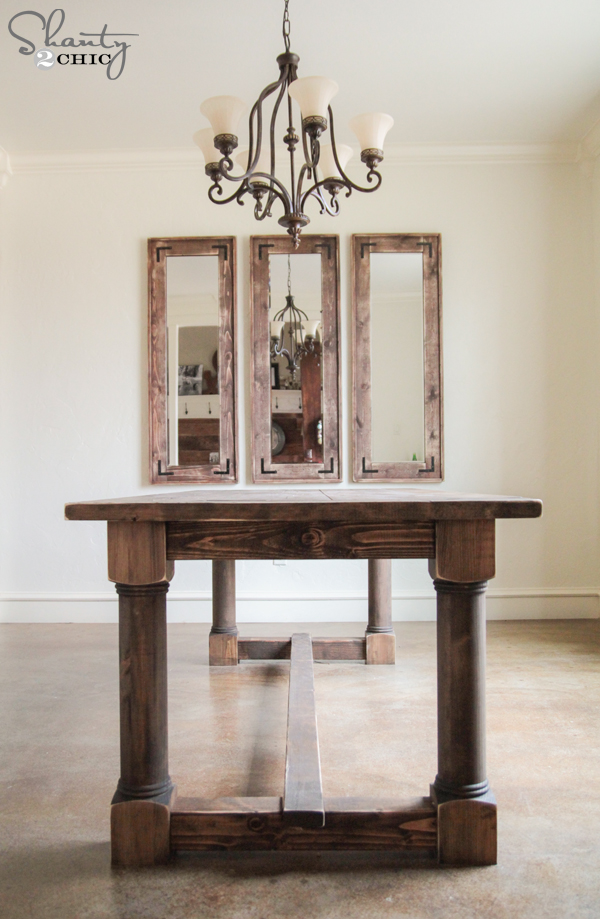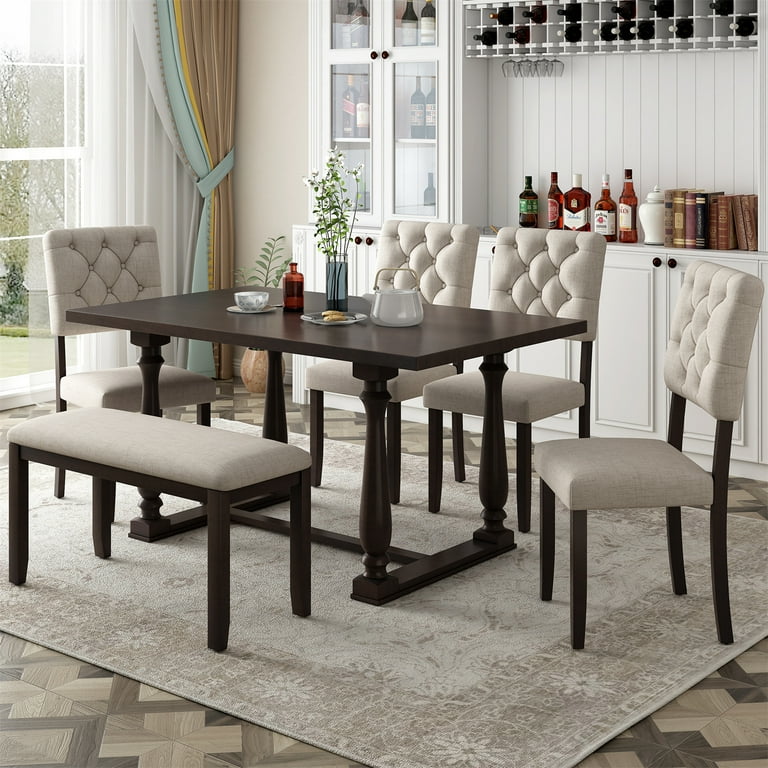Simple Steps to Replacing Old Dining Room Table Legs with New Ones
Simple Steps to Replacing Old Dining Room Table Legs with New Ones
Blog Article
Exactly How to Select the Perfect Dining-room Table Legs for Your Home Design
Picking the perfect dining-room table legs is a nuanced procedure that requires careful factor to consider of numerous components, including your space restrictions, visual choices, and practical needs. The interplay in between measurements, products, and designs can significantly influence the ambiance of your dining area, making it important to approach this choice systematically. As you ponder the myriad alternatives readily available, it comes to be clear that the ideal choice expands beyond mere appearance; it can improve your general dining experience. What elements should you prioritize to ensure your selection complements your home's distinct character?
Assess Your Dining Space
Assessing your eating space is crucial for picking the right table legs that match both looks and performance. Begin by measuring the measurements of your dining location, including ceiling height, flooring space, and closeness to other furnishings. This info will certainly assist determine the ideal size and elevation of your table, which straight influences the selection of table legs.
Following, think about the design and layout of your dining room. An open-concept style might profit from table legs that provide aesthetic lightness, such as slender steel or acrylic alternatives. Alternatively, an extra conventional setting may call for durable wooden legs that offer a feeling of durability.
Assess the existing color combination and materials in your dining area. Harmonizing the table legs with these elements creates a cohesive appearance that boosts the total style.
Inevitably, a comprehensive assessment of your dining space will certainly lead you in making an educated choice, making sure that your table legs not only enhance the visual appeal yet additionally offer useful purposes.
Consider Your Style Preferences
When picking dining-room table legs, it is important to mirror on your personal style choices, as they significantly affect the total aesthetic of your dining room. Your selection of table legs can either complement or contrast with existing décor, making it crucial to straighten them with your favored interior decoration style.
If your home leans towards a modern visual, think about sleek steel or minimalist wood legs that supply a clean, minimalist look. For a more traditional method, ornate wood legs with complex makings can include a touch of beauty and sophistication. Industrial designs benefit from durable, resources such as redeemed wood and steel combinations, mirroring a rugged beauty.
Additionally, farmhouse and rustic designs typically prefer strong, beefy legs that evoke a feeling of warmth and convenience. Conversely, if your decor is diverse, you might pick non-traditional forms or a mix of materials to produce aesthetic interest.

Evaluate Product Options
The choice of material for dining space table legs plays a crucial role in both toughness and visual allure. Common materials include wood, metal, and composite choices, each offering distinctive characteristics that can influence the overall look and durability of your table.
Wood is a traditional option, recognized for its heat and convenience. Woods like oak and walnut provide remarkable stamina and can be completed in different spots to match any type of decoration. Softwoods like want are a lot more susceptible to dents and scratches, making them much less excellent for high-traffic locations.
Steel legs, commonly crafted from steel or light weight aluminum, radiate modernity and industrial charm. They are immune and highly durable to wear, making them ideal for family members with kids or constant gatherings (dining room table legs). Additionally, steel can be ended up in different colors, enhancing the customization opportunities
Composite products, such as MDF or laminate, offer price and varied designs. While generally much less long lasting than solid timber or steel, they can still provide a stylish look and are typically easy to keep.
Eventually, the material you select ought to straighten with your way of life, aesthetic preferences, and the level of usage your dining table will certainly experience.
Determine Height and Dimension
Choosing the appropriate elevation and size for your dining-room table is essential for both capability and comfort. The typical height for eating tables usually varies from 28 to 30 inches, enabling ample legroom for a lot of individuals when seated. Nevertheless, it is vital to take into consideration the dimensions of your eating room and the kinds of chairs you intend to use.

In addition, consider the proportions of your dining-room. A larger table in a large area can produce a grand setting, while a smaller sized table works well in more intimate setups. Eventually, the appropriate elevation and dimension will certainly integrate with your total style and boost the eating experience for you and your visitors.
Explore Customization Possibilities

Furthermore, the style of the legs can be customized to fit numerous designs, such as rustic, contemporary, or industrial. Conical legs can site web stimulate a mid-century modern-day feel, while beefy, block-style legs might resonate with conventional or farmhouse style.
House owners can likewise explore shade finishes, from all-natural wood discolorations to paint, enabling them to match or comparison with the tabletop and bordering design.
Moreover, leg elevation can be gotten used to suit particular seating arrangements or individual choices, improving both convenience and performance.
Lastly, special embellishments, such as carvings or attractive brackets, can better customize the table legs, making the eating experience not just a dish but a declaration piece in the home. By taking into consideration these customization alternatives, homeowners can produce an eating room table that absolutely reflects their uniqueness.
Verdict
Selecting the suitable dining space table legs calls for careful consideration of numerous factors, including the measurements of the eating space, design choices, material sturdiness, and wanted height. Personalization alternatives further enhance the capability to attain a cohesive aesthetic that matches the overall design. By methodically evaluating these aspects, home owners can ensure that the picked table legs not just satisfy useful requirements however additionally contribute positively to the dining experience and atmosphere of the home.
Picking the optimal eating room table legs is a nuanced process that needs cautious factor to consider of various aspects, including your room original site constraints, aesthetic preferences, and functional demands.Assessing your dining space is critical for selecting the right table legs that complement both appearances and functionality.When determining size, measure the location where the table will certainly be placed to ensure it fits comfortably, permitting for at least 36 inches of clearance around the table for very easy movement. A larger table in a large location can produce a grand setting, while a smaller table works well in even more intimate settings.Choosing the excellent eating space table legs needs careful consideration of numerous aspects, including the dimensions of the eating area, style choices, product longevity, and preferred height.
Report this page